Calf Rearing Series
Terragen’s five-part educational calf-raising series, from Vet Scientist Dr Joss West, aims to help dairy farmers maximise productivity in the pen while keeping calves healthy.
PREPARATION
Preparation is key and starts well before calves are born. Strategising pre-calving vaccinations tailored to your farm’s challenges is vital when helping prevent disease in calves.
Despite an industry-wide staff shortage, ensuring workers are trained and prepared ahead of time on colostrum and nutritional management, hygiene, detecting sickness, and record keeping will allow your system to stay ahead of the curve.
Preparing housing, bedding, feeding equipment and veterinary supplies at a high standard will also allow for a smooth calf-rearing operation.
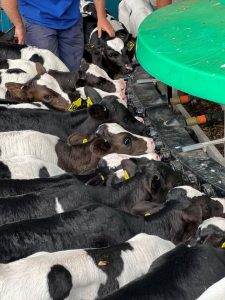
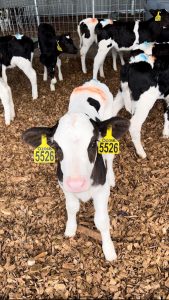
HOUSING
Before calves start dropping on the ground, rearers must ensure a calf’s housing is structurally sound and they are reasonably protected from the elements in their shed.
Yet, a balance must be struck – calves need adequate ventilation so there is a constant flow of fresh air, but not so much that there is a draught. Poor ventilation is a major factor in respiratory disease and other health issues.
A simple way to assess ventilation in your set up is to hop down to calf height – if you can smell ammonia or it seems dusty, damp or irritant, it may indicate a need to make some adjustments.
A bedding material that is both absorbent and comfortable should be selected – like wood chips or saw dust – while heavy soiling needs to be avoided.
Calf rearers should prioritise biosecurity and hygiene. This includes minimising the need to enter pens, avoid sharing between pens, dedicating a ‘hospital’ pen and continuous thorough disinfection protocols.
COLOSTRUM
When rearing calves, colostrum management and administration is arguably the most important factor in calf health development.
Colostrum is not only nutrient-dense but also contains maternal antibodies (immune protection from the mother) which protect the calf against diseases.
The only access to this protection is through colostrum intake – therefore the timing, quality and quantity of colostrum given to a calf all impacts successful development.
Hygienic collection and storage of colostrum is vital, and rearers should measure quality with a Brix Refractometer before feeding.
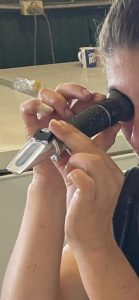
This device gives the user a percentage measurement of the nutritional solution’s quality and it is expressed as X% Brix.
There are several feeding protocols out there – your local veterinarian is probably the best person to advise on your system.
I generally aim for this following method:
The 🥇 Standard: If you possess a good quality colostrum (>22% Brix), Give two x 2L feeds within 12 hours of birth; or if you only have access to poor quality (< = 22% Brix) or not tested, give 2 x 3L feeds within 12 hours of birth. Then the farmer would ideally give these calves 2L of good quality colostrum in the following 12hrs if it’s available.
Poor quality or leftover colostrum can be fed to 2-3 day old calves.
Calves may need strategic supplementation if they cannot access colostrum which is more than 18% Brix.
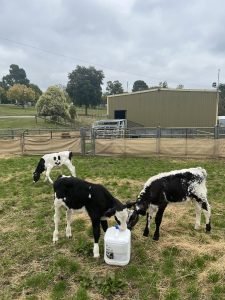
NUTRITION
Whether calf rearers are feeding milk, calf milk replacer or a combination, the main rules are:
a. Consistency – supply, temperature, mixing and preparation must all be as consistent as possible until weaning.
b. Ensure there’s adequate teat space. When calves are being fed with a rubber teat, one teat per calf.
c. Feeding calves at a minimum of twice per day is recommended for at least the first 14 days.
d. Accelerate rumen development – the key to a successful weaning is a functional rumen, and nutritional management allows us to accelerate this process.
An immature calf is reliant on its enlarged abomasum and is capable of digesting milk only.
However, microbial colonisation in the rumen is essential for a calf’s development and function. The best way to kick start this process is to encourage early consumption of grain or grain based concentrates. For this reason it is recommended to introduce grain based rations to calves from day one.
Fresh, clean water should be available at all time, not just for hydration but also to help microbial digestion and subsequently rumen development.
Hay and/or high quality dietary fibre encourages rumen motility to begin and should be available, but it should not take up more than 10% of a calf’s total diet prior to weaning. Milk and concentrates are of more importance.
Probiotics such as MYLO® help accelerate and enhance the early development of diverse good microflora in the calf’s rumen.
RUMEN DEVELOPMENT & SUCCESSFUL WEANING
The key to a successful weaning lies in rumen development.
A calf is born with an immature gut capable of digesting milk only. Calf rearers need to stimulate rumen growth and development as soon as possible to ensure successful weaning at an early age. Rumen development is largely reliant on establishing a healthy and diverse population of microbes. Utilising solid foods – especially grain based – encourages microbial colonisation, hence why I recommend concentrate feeding from day one.
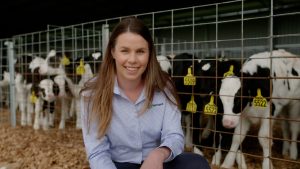
Also, probiotic supplementation has been shown to give calves a head start in establishing a healthy, diverse rumen microbiota. Solid foods and probiotics lead to accelerated gut development and a reduction in any pathogenic challenges. One probiotic containing live microbes is MYLO®.
Studies have found calves which have been supplemented with 10mL of MYLO® per day:
• Eat solids up to 7 days earlier
• Have advanced gut development
• Wean earlier (around 10 days) and/or heavier (8%).
A visual indication your calves may be ready to wean is when you see more than 50% of them chewing their cud, while their manure changes to a more pat-like form and consistency.